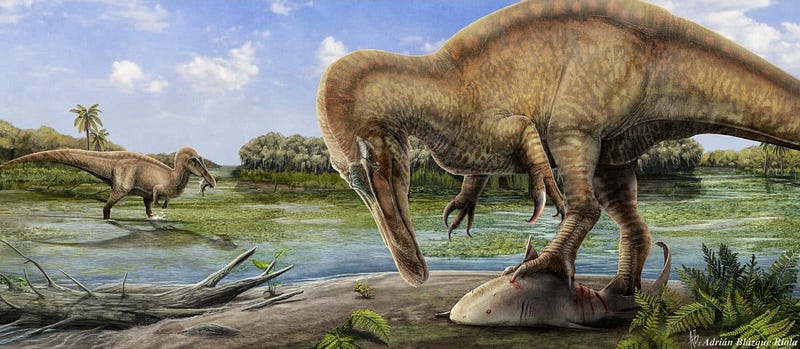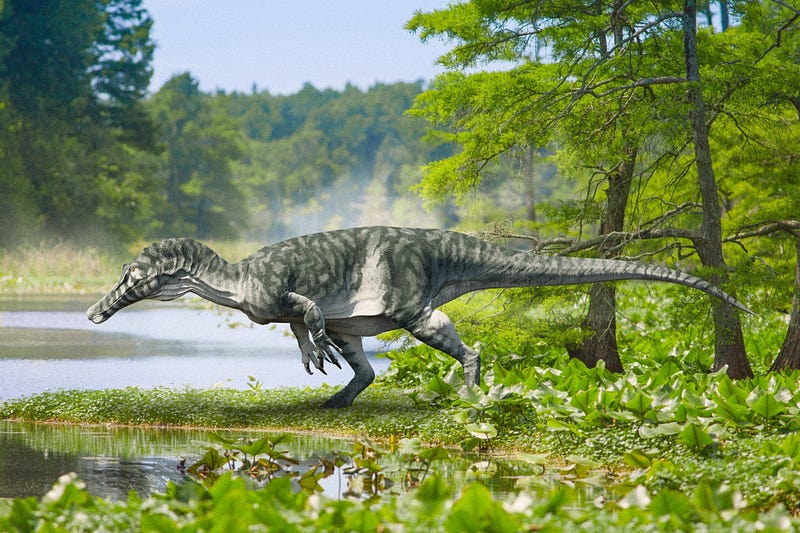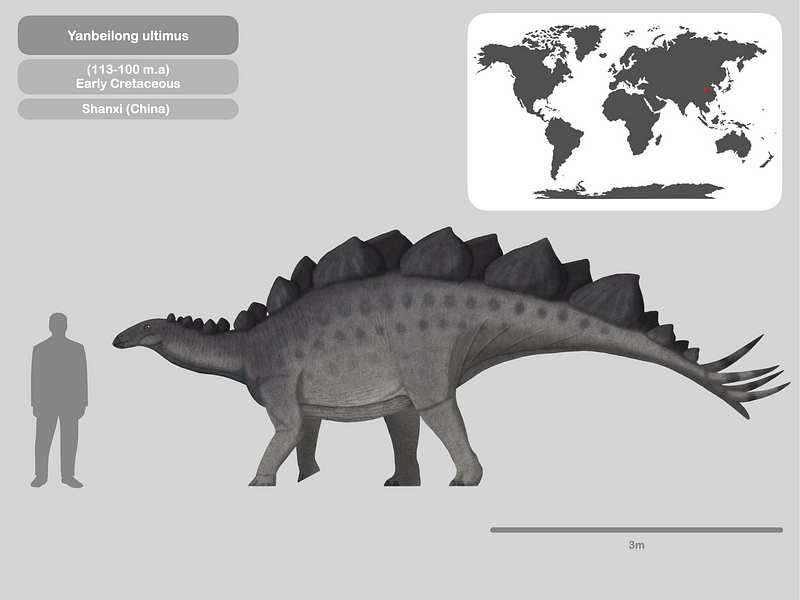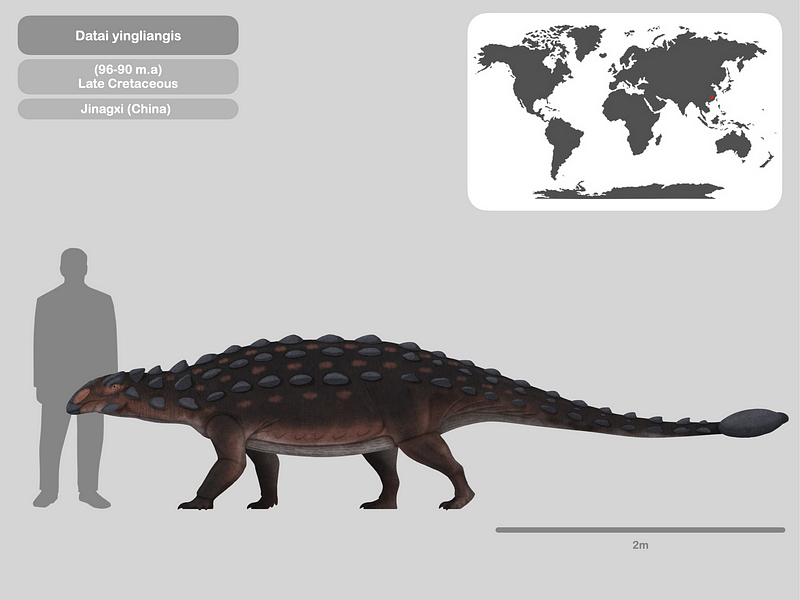Exciting Discoveries: Five New Dinosaur Species Unveiled
Written on
Chapter 1: Introduction to Recent Discoveries
February 2024 has proven to be a milestone in the field of paleontology, revealing five newly identified dinosaur species that contribute significantly to our understanding of ancient life. Among these intriguing finds are a novel genus of spinosaurid, a remarkable hadrosaur that crossed oceans, and potentially the last known stegosaur. Let’s explore these fascinating creatures in detail.
Section 1.1: The Spinosaurid from Spain
One of the standout discoveries is Riojavenatrix lacustris, a dinosaur that thrived during the Early Cretaceous period, approximately 120 to 113 million years ago. This species is one of five spinosaurid dinosaurs identified from the Iberian Peninsula, alongside Camarillasaurus, Iberospinus, Protathlitis, and Vallibonavenatrix. Spinosaurids are a unique group of theropods characterized by their elongated, crocodile-like skulls, which often led them to be piscivorous.
With its slender snout and conical teeth, Riojavenatrix likely hunted along the banks of ancient lakes and rivers, targeting fish and other small to medium prey. Estimates suggest this predator measured around 5 to 6 meters (16 to 20 feet) in length.

Section 1.2: The Last Survivor of Stegosaurs?
Stegosaurs, known for their distinctive dorsal plates and spikes, thrived during the Jurassic period but saw a decline in the following Cretaceous era. In February 2024, a new stegosaur species was identified from Early Cretaceous strata in northern China. This species, named Yanbeilong ultimus, meaning “dragon from north of Yanmen Pass,” is significant as it represents one of the latest members of the stegosaur lineage.
Yanbeilong likely boasted a double row of bony plates along its back and had formidable tail spikes. It could reach lengths of 6 to 7 meters (20 to 23 feet) and was herbivorous. Its discovery sheds light on the late presence of stegosaurs, enhancing our understanding of their evolutionary history.

Section 1.3: The Ocean-Crossing Hadrosaur
Another significant discovery is a new genus of dwarf hadrosaur found in Moroccan Late Cretaceous rocks, dating to about 68 million years ago. Named Minqaria bata, this dinosaur was relatively small, measuring around 3.5 meters (11.5 feet) in length. Its fossils were discovered alongside those of the hadrosaurid Ajnabia odysseus, based on a partial skull.
The existence of hadrosaurids in Africa presents an intriguing mystery, given the continent's isolation from other landmasses since the mid-Jurassic. It appears these dinosaurs may have traversed bodies of water to reach Africa. This discovery significantly enhances our understanding of hadrosaurid distribution and the interactions between continents during the Late Cretaceous.

Chapter 2: New Insights into Ankylosaurs and Sauropods
Section 2.1: A Unique Ankylosaur from China
Datai yinliangis, discovered in February in Liaoning Province, China, dates back to the Late Cretaceous, roughly 70 million years ago. This ankylosaurid featured an armor of thick bony plates and a tail equipped with a formidable club, likely used for defense.
Although the skeleton is not fully preserved, its distinct skull and neck armor suggest it represents a transitional form, sharing traits with earlier ankylosaurids and more derived types like Pinacosaurus. It is estimated to reach lengths of about 4 to 5 meters (13 to 16 feet).

Section 2.2: The Jurassic Giant Jingia
A newly identified long-necked dinosaur, Jingia dongxingensis, has been discovered in the Upper Jurassic deposits of southern China. The skeleton includes well-preserved back, hip, and tail bones, along with parts of its limbs.
Scientists have classified Jingia as belonging to the Mamenchisauridae family, renowned for their exceptionally long necks. This dinosaur could grow up to 14 meters (45 feet) in length and stand about 8 meters (26 feet) tall. Its discovery contributes valuable insights into the evolution of sauropods in China during the Late Jurassic period.

Epilogue: The Importance of Ongoing Research
In summary, the identification of five new dinosaur species in February 2024 provides crucial insights into prehistoric ecosystems. From formidable hunters to large herbivores, each discovery enhances our understanding of the diverse life forms that existed during the Mesozoic Era. These findings highlight the significance of paleontological research in uncovering the complexities of our planet’s ancient past.
The first video explores the recent discovery of a winged dinosaur species on a Scottish island, which reveals connections to China. This video provides an in-depth look at the fossil findings and their implications for understanding prehistoric life.
The second video showcases swimming dinosaurs, offering fascinating insights into their behaviors and adaptations. This February development diary is essential for fans of prehistoric life and the ongoing research in this field.
Notes
[1] Prior to the identification of Yanbeilong, only four confirmed stegosaur species were known from the Cretaceous: Paranthodon, Wuerhosaurus homheni, Wuerhosaurus ordosensis, and Mongolostegus exspectabilis.